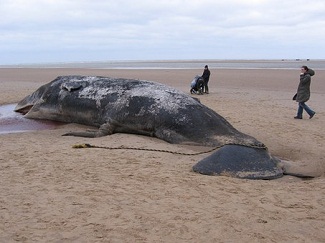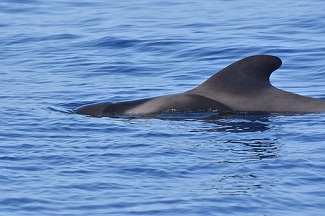Carcasses of two right whales have been found in Canada gulf, taking the death toll to nine. Canada’s Department of Fisheries and Oceans (DFO) revealed that these carcasses were found at Cape Ray and Cedar Cove.

Animal conservation groups and researchers are puzzled about death of so many North Atlantic right whales in recent months. In the past two months, nine carcasses of these critically endangered whales have been found in Canada’s Gulf of St. Lawrence.
The Marine Animal Response Society (MARS), a charity organization, said on Monday that the condition of recently discovered carcasses is very poor.
Kim Davies, a Dalhousie University post-doctoral fellow, has been tracking these animals for the past many years. According to him, 2017 has been the deadliest year for these animals as only 525 North Atlantic right whales are now left in the world. This season, only five right whales were born, and many of those recently found dead were of reproductive age.

Scientists believe human activity is responsible to some extent for these deaths. One of these nine whales was killed after being entangled in fishing gear, while three died from blunt force trauma.
“There’s some preliminary studies that show the deaths are related to human activities,” said Sigrid Kuehnemund, lead specialist in oceans for the World Wildlife Fund.
Kim Davies revealed that a high-than-normal numbers of these whales have been spotted in the Gulf of St. Lawrence this summer, possibly because of the better availability of their zooplankton food source in this area compared to the Bay of Fundy and Gulf of Maine.
DFO confirmed that one of the three carcasses found recently was a new specimen, and researchers were able to collect samples for genetic analyses from it. DFO has completed necropsies on six of the dead whales, and results are expected to come in the coming weeks.
Tonya Wimmer, MARS director, researchers couldn’t find any one particular cause behind deaths of right whales.
“Some had signs of blunt trauma, one had chronic entanglements, we do know that there were other animals out there swimming with fishing gear on them, so it seems sadly for this population to be the standard story for them,” she said.
DFO has directed ships moving in the Gulf of St. Lawrence to reduce their speed to 10 knots or less.
Tonya Wimmer suggests that it is essential to make rules about vessel routes, speeds and gear to find a long-term solution to this problem.
“This is unprecedented. And it’s catastrophic. … For the sake of the species, it needs to stop,” she added.